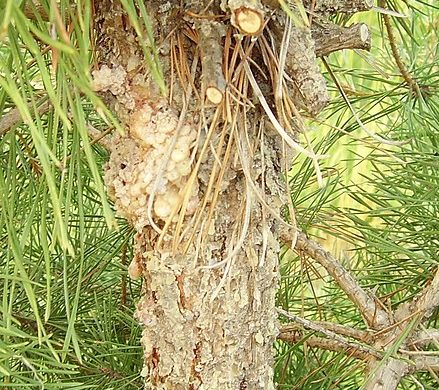Insect Blog

Zimmerman Pine Moth
May 14th, 2019
Commonly affects:
Austrian, Ponderosa, and Scotch Pines.
Symptoms:
The initial sign is the appearance of small yellowish-flesh colored globs of sap on the bark where the borer is feeding. By the time this is seen, the insect has been active in the tree for up to two years. Individual branches may die and/or break off due to the internal damage the borer causes.
Life Cycle:
In July, the moth emerges from the bark and lays its eggs soon afterward. The eggs hatch into small “worms” that begin boring into the bark to feed the following spring.
Treatment/Care:
Infected trees should be preventively sprayed twice in April when the “worms” begin boring. Zimmerman pine moth cannot be detected prior to the symptoms outlined earlier. It is active mostly in the southern areas of the Denver metro area. It is not possible, however, to predict if a particular tree will be attacked.
